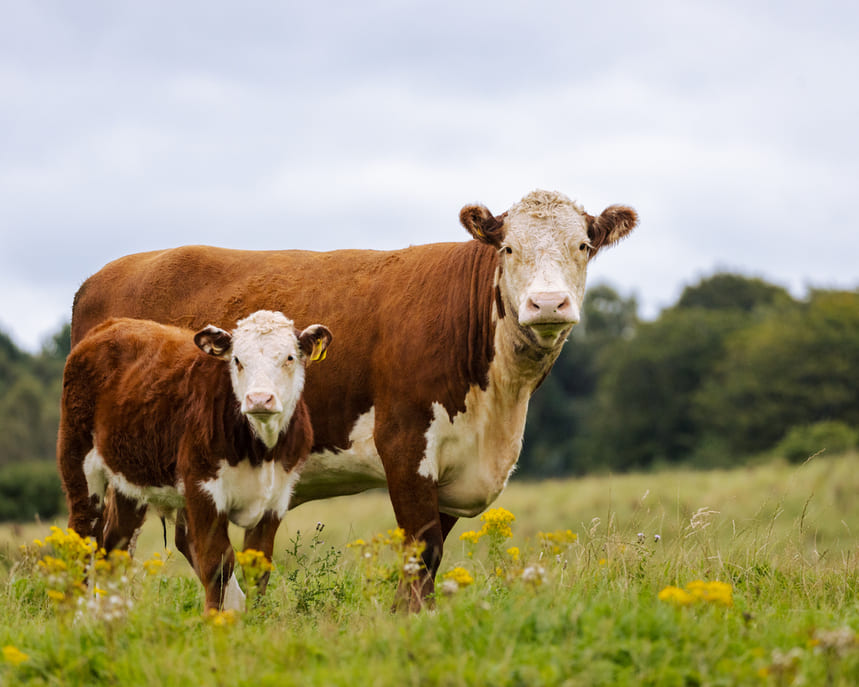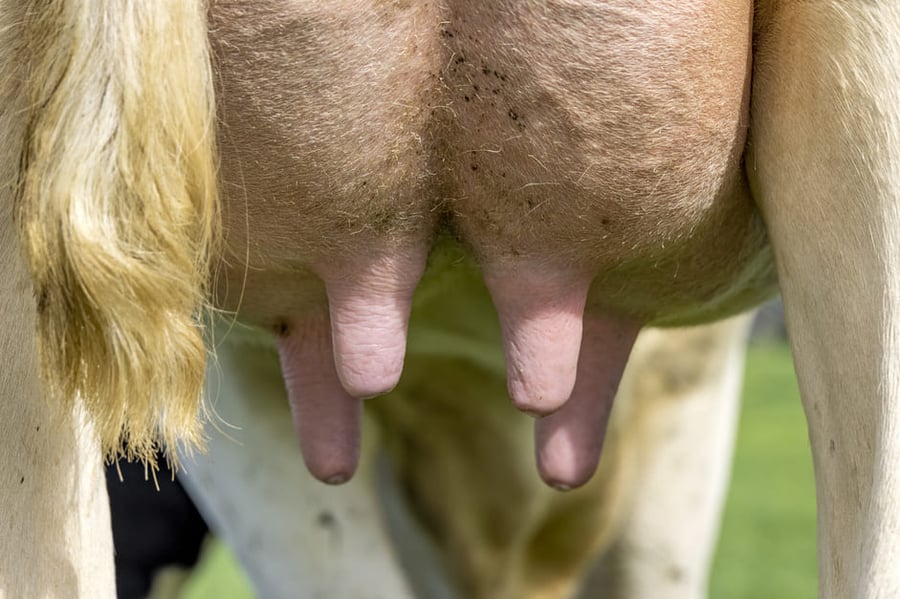When cattle are contaminated by Coxiella burnetii, the herd becomes infected with Q fever. This disease is responsible for many clinical signs, sometimes acute, such as abortions, but often more insidious, such as uterine infections (puerperal metritis and endometritis), placental retentions or, more generally, fertility problems.
It is obvious that all these disorders cause losses in herd performance, which impacts on profitability. Numerous studies have established, clinical sign by clinical sign, the impact of infection with Coxiella burnetii in cattle and, by extrapolation, the economic impact of the disease.
Abortion and early pregnancy losses caused by Coxiella burnetii in cattle
Several studies have shown that Q fever positive cows are 2 to 2.5 times more likely to abort. Thus, if we consider a herd of 200 dairy cows and take the average abortion rate of 2% as a reference, an uninfected herd would have 4 abortions per year.
In the case of a herd where 50% of the cows are infected, there would be 6 or 7 abortions per year, i.e. 2 or 3 more than in a non-infected herd.
The cost of a dairy cow abortion is estimated to be between 400 (for an early abortion) and 1000 euros (for a late abortion). If we take an average value of 700 euros, we can therefore consider that the economic impact of Coxiella burnetii in cattle is 1400 euros for abortions in a herd of 200 cows.
Early pregnancy losses and other fertility disorders caused by Coxiella burnetii in cattle
According to recent data, embryo mortality is four times higher in infected cows than in healthy cows.
However, the economic impact of this reproductive problem and more generally of fertility disorders is easier to calculate by looking at the number of open days. A study carried out in Spain by Lopez-Gatius in 2011 showed that cows not vaccinated against Q fever had a 14-day longer calving to conception interval. Similarly, the first service conception rate was almost 12 points lower in unvaccinated cows (30.1% vs 40.9%).

Based on an average day open cost of 5 euros, an infected cow therefore costs the farm 70 euros per year. Taking the typical farm of 200 dairy cows with half infected cows, the annual losses amount to 7000 euros.
Retained placenta and uterine infections
Treatment, and therefore costs, may also be incurred by the infection of the herd by Coxiella burnetii. In cattle, it has been shown that infected cows are 1.52 times more likely to have retained placenta. In our herd of 200 cows, half of them being infected, this will mean 2 extra placental retentions per year and therefore the cost of two extra treatments for this condition.
About puerperal metritis and endometritis, a study carried out in Italy showed that these diseases were 2.5 more likely to occur in infected herds. Therefore, based on an average baseline prevalence of metritis and endometritis of 15% in non-infected dairy farms, in an infected herd of 200 cows, the annual incidence of metritis and endometritis would increase from 30 to 75. This means that an additional 45 cows would need to be treated for this disease each year.
Mastitis caused by Coxiella burnetii in cattle
Little data is available on this point although it is known that the bacteria are present within the udder. However, Barlow in 2008 showed that sub-clinical intramammary infections were 5% higher in cows that shed the bacteria in milk compared to non-excreting cows.

Furthermore, in goats, Q fever has been shown to cause a decrease in milk yield by 17%. To date, no scientific study has been conducted to verify whether the same is true for cows.
Globally, how much costs Coxiella burnetii in cattle?
By pooling data on the economic losses and additional treatments associated with Q fever infection in a herd, a simulation model was constructed by a team from the National Veterinary School of Toulouse (France). It appears that the cost of the disease in a herd of 200 dairy cows is 7900 euros per year when the prevalence is low (20%) but rises to almost 20000 euros (i.e. 100 euros per cow) when the prevalence is high (50%).
Theefore, in addition to the sanitary problems and the risk to human health, Q fever is responsible for significant economic losses in the affected farms. Its control, through biosecurity measures and vaccination, can greatly reduce its financial impact. Thus, an economic simulation model presented at the World Buiatrics Congress in Madrid in September 2022 by the team from the National Veterinary School of Toulouse showed that the implementation of vaccination made it possible to increase the profitability of herds by 3,000 to 12,000 euros per 100 cows in three years.
About the author
Philippe Gisbert (Ruminants Global Technical Manager)
Philippe Gisbert started his career in 1994 as a Vet practitioner working with companion and farm animals for over 9 years. He then became Health Affairs Manager for Group Agena (artificial insemination company). In 2008 he joined Eurofins – Laboratoire Coeur de France as Animal Health Unit Manager where he worked for 7 years until he joined Ceva France as Technical Manager Ruminants (Infectiology, Vaccines and Diagnostic). Since 2020 he is Global Technical Manager for Biologicals, Udder Health and Antiinflammatories. He is a member of SIMV diagnostic and anti-infective technical groups and has integrated different working groups of ANSES and UNCEIA related to epidemiology, antibiotic resistance and reproduction in livestock.
Explore author’s articlesFrequently Asked Questions
-
Which animal has Coxiella burnetii?
Many animal species are susceptible to Q fever, but the most concerned species are ruminants, including cattle, sheep and goats. -
How do you treat coxiellosis in animals?
As, in ruminants, medical treatment (antibiotics) are not efficient to treat the disease, the best way to control Q fever is to prevent it by biosecurity measures and vaccination. However, in an infected herd, vaccination has also been shown to reduce the clinical impact of the disease and to reduce the shedding of the bacteria by the animals.

.jpg)
Leave your comments here